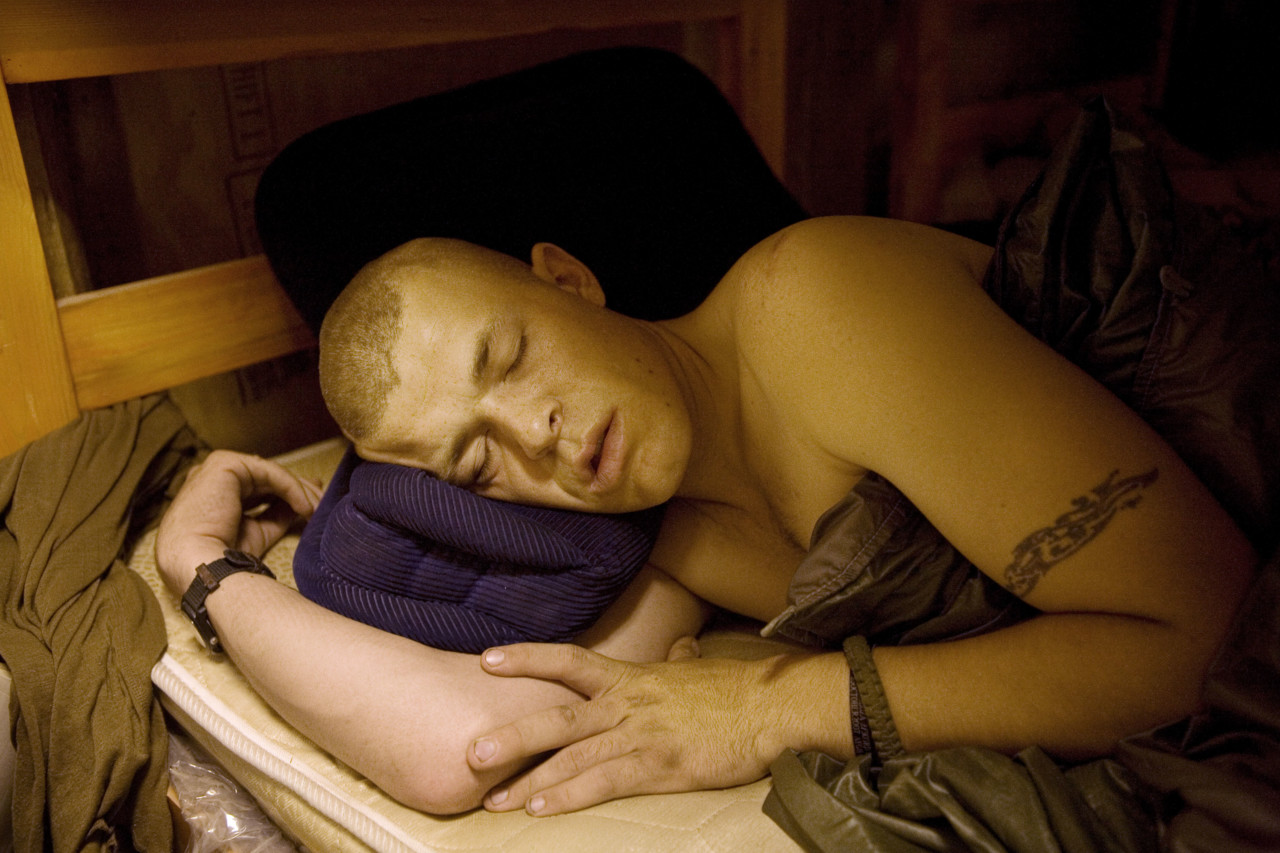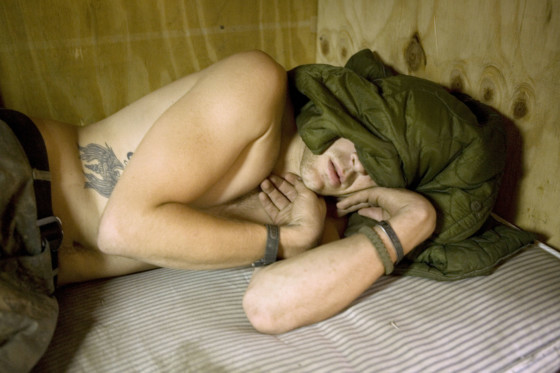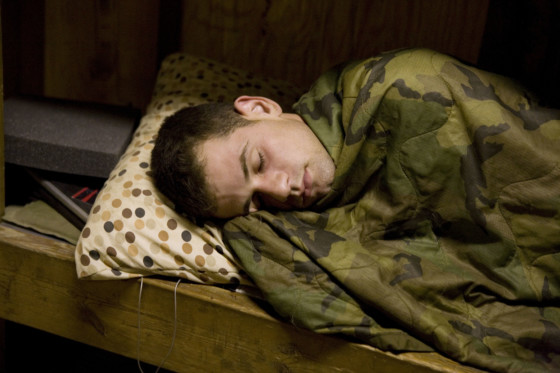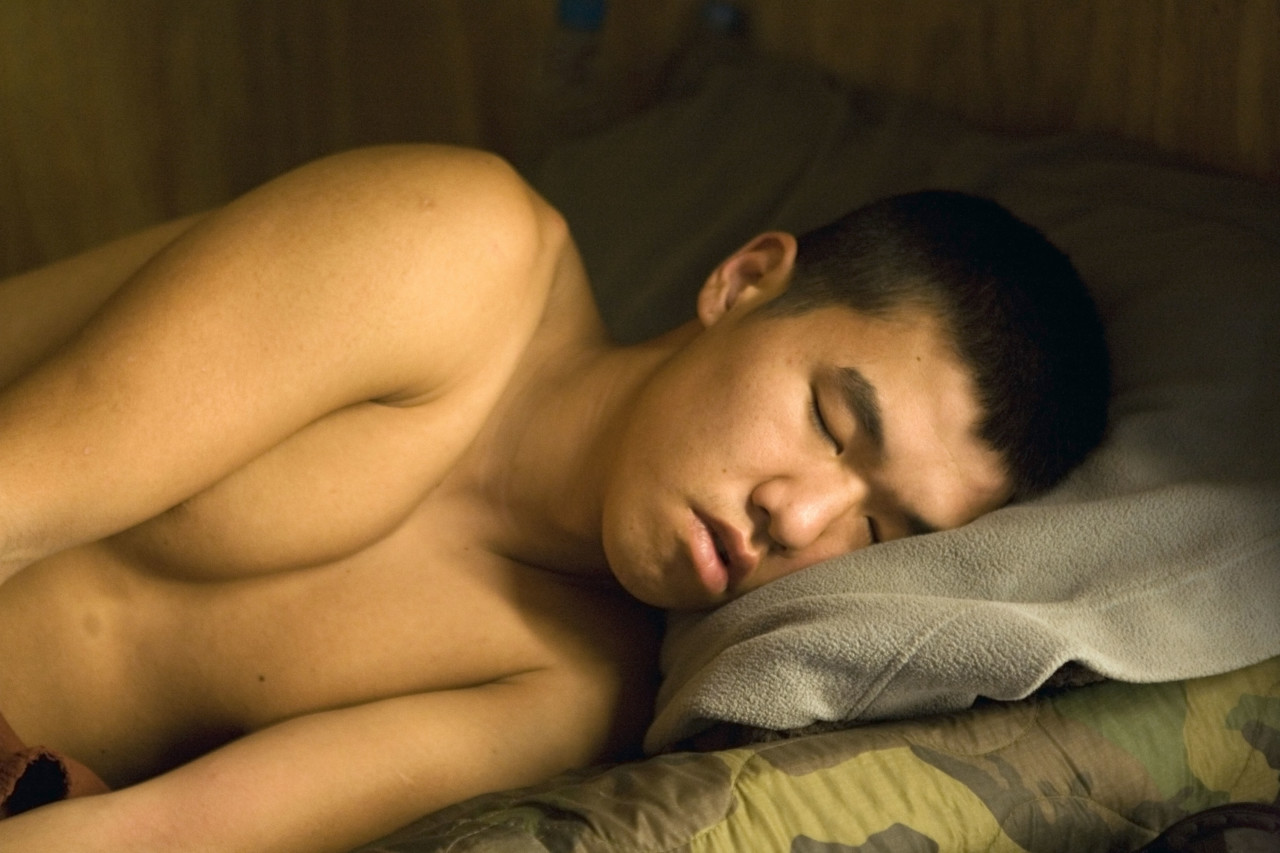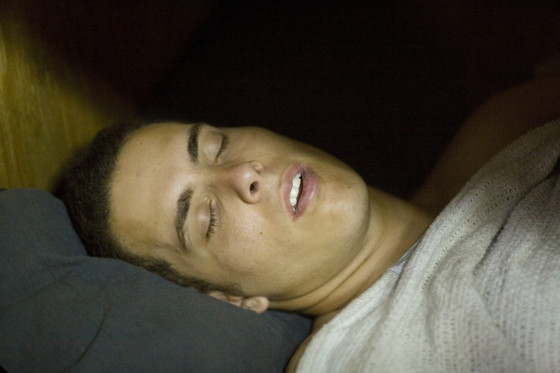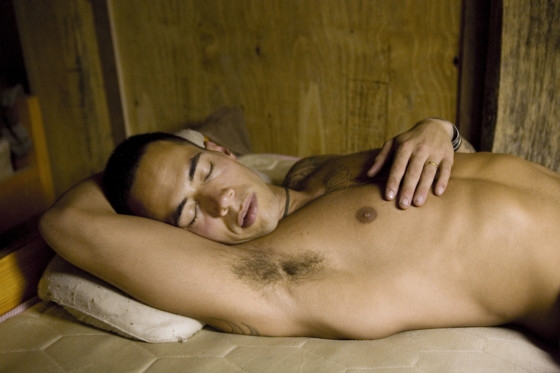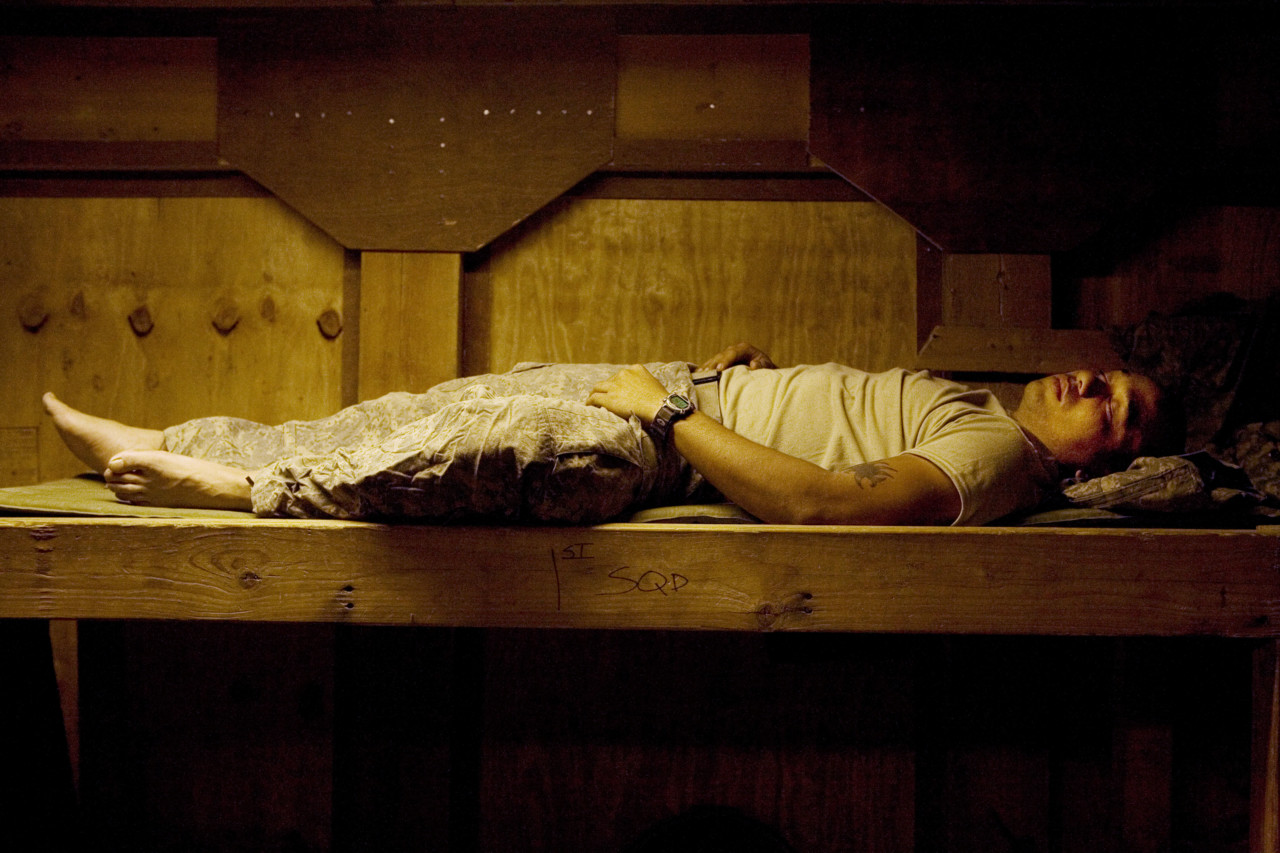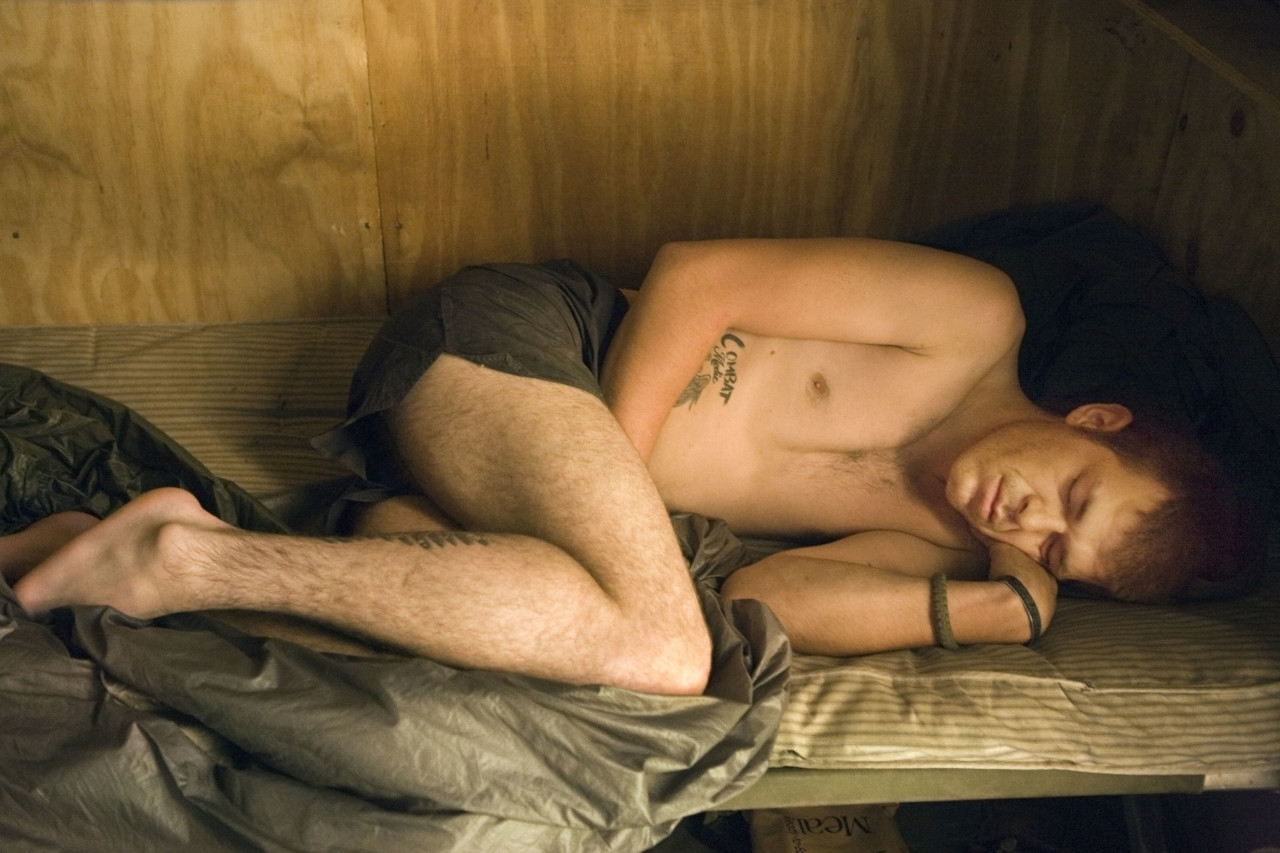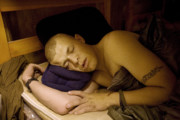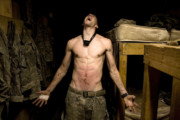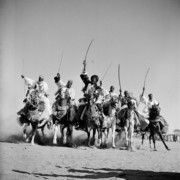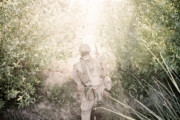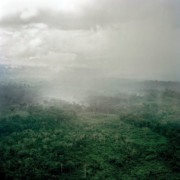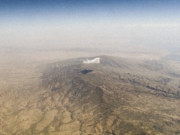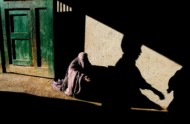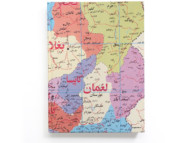Tim Hetherington’s Sleeping Soldiers
Looking back at the late photographer's humanizing portraits of U.S. soldiers at rest during a tour in Afghanistan
The Korengal Valley was widely considered one of the most dangerous postings in the US-led coalition’s war against the Taliban in Afghanistan. Initially visiting the area alongside journalist Sebastian Junger for a Vanity Fair assignment, Tim Hetherington’s documentation of one U.S. Airborne Infantry platoon’s experiences, morphed into a two-year study that resulted in an astonishing array of work. It included traditional journalistic coverage of the Afghan war, a profound study of fighting men in the multi-screen multimedia project Sleeping Soldiers, a fly-poster exhibition, the book Infidel, and the feature documentary Restrepo – which earned Hetherington and Junger an Oscar nomination for best documentary.
"It’s all about the men. I didn’t want to pretend this was about the war in Afghanistan"
- Tim Hetherington
Speaking about Infidel, Hetherington – who died aged 40 whilst covering the war in Libya in 2011 – said: “It’s all about the men. I didn’t want to pretend this was about the war in Afghanistan. It was a conscious decision. [It] comments on the experience of the soldier. It’s brotherhood. The flow of pictures is to introduce you to the Korengal Valley first and then to see the men in an intimate way… To get to know them and how they lived. Then you see them in combat in the traditional combat style. Finally, you see them as young men, sleeping.”
The sleeping soldier series stood out for its unique take on war documentary, offering an unusually intimate portrait of the young men who served. An installation comprised of the intimate portraits of sleeping soldiers, alongside video footage of the day-to-day work of the men at war – with editing and sound design by Magali Charrier – was shown at the 2009 New York Photo Festival, where visitors were encouraged to stand up-close to the work on the walls.
Sebastian Junger recalls Hetherington turning his camera to the soldiers as they slept: “Restrepo, the outpost that we were at was a one or two hour walk from the nearest American position and there was no diversion of any sort out there. There was no electricity, there was no Internet, there was no television. There were none of the things that bored soldiers do in their spare time. They really were just sitting around and sleeping – they slept a lot. One very hot day – it was around 90 degrees – and there’s flies and nothing’s happening in the lingering heat, in the boredom and delirium, Tim was sort of creeping round taking photographs of the guys who were asleep.”
"That was his brilliance, to see what others were missing"
- Sebastian Junger
“What he said to me was, “Look, this is how their mothers see them, they don’t have their gear on, they’re like these little boys and you never get to see soldiers the way their mothers see them. And here they are asleep, innocent, unguarded” … They’re pretty big boys mostly. That was his brilliance, to see what others were missing.”
Reflecting on the significance of this way of depicting men at war, Junger says, “I think it’s very easy to lionize soldiers and I think it’s very easy to demonize them, and it’s very easy to use them as a symbol of something or representative of something that you either really like or really don’t like. But what gets lost in all of that is the individuals. Seeing them in their most unguarded moments, when they’re asleep, I think what it does for both pro and anti war people it humanizes the individuals involved.”
Some of Tim Hetherington’s “Sleeping Soldiers” is included in new exhibition “The Body Observed“, which opens in Norwich on March 23.


